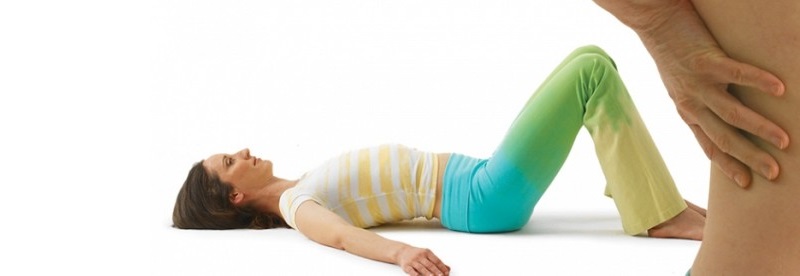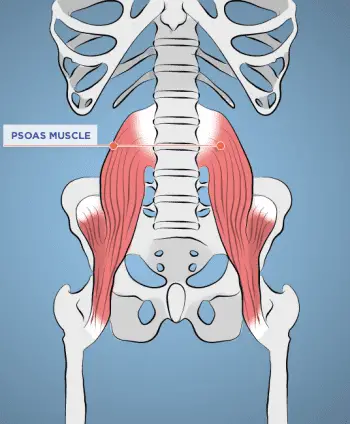Contributing writer for Wake Up World
You may never have heard of the psoas muscle, and yet, it deeply affects not only structural balance, flexibility, strength and organ functioning, but also our emotional stability, level of energy and overall health. In fact, the psoas influences everything from lower back pain and anxiety, to full body orgasms and pure pleasure. It is a supple, juicy dynamic muscle. [source].
According to yoga therapist and author Liz Koch, the psoas is much more than a stabilizing muscle, it also has a strong impact on our day-to-day emotional well-being and physical vitality. She believes the psoas is a bio-intelligent tissue that literally embodies our deepest urge for survival, and more profoundly, our elemental desire to flourish. It’s an emotional muscle that communicates what we are feeling deep within the belly core — otherwise known as “gut feelings.” When this area of the body is tight and contracted, a range of painful conditions, both emotionally and physically, can arise.
The “Muscle of the Soul”
A major core-stabilizing muscle stretching from the legs to the spine, the psoas (pronounced so-az) connects the legs to the spinal column near the hip bones. When the psoas is functioning properly, it acts like a suspension bridge between the legs and trunk.
“In walking, a healthy psoas moves freely and joins with a released diaphragm to continuously massage the spine as well as the organs, blood vessels, and nerves of the trunk. Working as a hydraulic pump, a freely moving psoas stimulates the flow of fluids throughout the body.” [source]
The psoas is connected to the diaphragm as well, which modulates breathing and can influence, or respond to, feelings of fear and anxiety. There’s also a direct link between the psoas and the amygdala, the area of the brain responsible for our fight or flight response, which is sometimes referred to as the ‘reptilian’ brain. Writes Koch:
“Long before the spoken word or the organizing capacity of the cortex developed, the reptilian brain, known for its survival instincts, maintained our essential core functioning.”
Since our fast-paced, modern lifestyle chronically triggers a state of fight or flight, the sympathetic nervous system perpetually keeps the psoas tight. In turn, the muscle eventually shortens, which can cause low back pain, sacroiliac pain, sciatica, disc problems, scoliosis, hip degeneration, knee pain, menstruation pain, infertility, and digestive problems. Furthermore, a tight psoas puts pressure on nerves and hinders the proper movement of fluid, while also impairing diaphragmatic breathing. Sedentary lifestyles — sitting for hours on end at our desks, watching television or driving in cars — are a disaster for the psoas. And our health.
“The psoas is so intimately involved in such basic physical and emotional reactions, that a chronically tightened psoas continually signals your body that you’re in danger, eventually exhausting the adrenal glands and depleting the immune system.” [source]
On the upside, by cultivating a healthy psoas, we can rekindle our body’s vital energies by learning to reconnect with the life force of the universe. In the Taoist tradition, the psoas is referred to as “the seat” or “muscle of the soul,” which encircles the Dan Tien — a major energy center of the body.
“The psoas, by conducting energy, grounds us to the earth, just as a grounding wire prevents shocks and eliminates static on a radio. Freed and grounded, the spine can awaken.
“As gravitational flows transfer weight through bones, tissue, and muscle, into the earth, the earth rebounds, flowing back up the legs and spine, energizing, coordinating and animating posture, movement and expression. It is an uninterrupted conversation between self, earth, and cosmos,” says Koch.
She also points out that once we learn how to approach life without chronic tension, the psoas naturally begins to relax — and we can create a sense of inner peace and sensitive attunement to our genuine safety or danger.
Just “Be” with Your Psoas
But sometimes we need a little extra help to get things moving. Certain yoga poses are known to stretch and maintain the flexibility of the psoas, as well as release emotional blockages contained within. Some of the best asanas include pigeon, crescent lunge, camel, bridge, cobra and fish.
Moreover, the psoas are crucial for proper balance, alignment, joint rotation and full muscular range during yoga. Isolating and gently stretching this important muscle is well-worth the small investment!
Psoas Stretch: 2 Minute Sequence
Do you struggle with tight hips? Then, it’s time to stretch out the psoas muscle and open up the hip flexor. (Video by YogaBody on YouTube.)
Additionally, Koch recommends a pose dubbed “Constructive Rest” to lengthen and relax the psoas muscle. The position allows the spine to assume its natural shape by relying on the floor for support. It also releases tension and stress held by the body and mind. Before your evening meal, hold the pose for 10-20 minutes each day with a soft jaw and eyes.
“Begin by resting on your back. Knees bent and feet placed parallel to each other, the width apart of the front of your hip sockets. Place your heels approximately 12-16 inches away from your buttocks. Keep the trunk and head parallel with the floor. If not parallel place a folded, flat towel under your head. Do not push your lower back to the floor or tuck your pelvis under in an attempt to flatten the spine. For best results keep the arms below the shoulder height letting them rest over the ribcage, to the sides of your body or on your belly. There is nothing to do; constructive rest is a being position.”
Although this pose is deceptively simply, don’t be fooled — it uses gravity to release the psoas and will ultimately cultivate a heightened sense of peace for yourself and the world with consistent practice.
Article sources:
- “Core Awareness, Revised Edition: Enhancing Yoga, Pilates, Exercise, and Dance” Liz Koch, North Atlantic Books, 2012
- www.coreawareness.com/articles/the-one-muscle-that-does-not-need-strengthening
- www.yoganatomy.com/psoas-resources
- www.yogaclassesinbrighton.co.uk/thepsoas
- www.yogabody.com
- www.yogajournal.com/article/practice-section/the-psoas-is
Recommended articles by Carolanne Wright:
- Renowned Harvard Psychologist Says ADHD is Largely a Fraud
- Plastic Waste in the Ocean Will Outnumber Fish by 2050
- Plastic-Eating Mushroom Discovered in the Amazon Rainforest — A Solution for Our Trash Saturated World?
- Over 100 Scientific Studies Agree: Cannabis Annihilates Cancer
- Why Every Parent Should Consider Unschooling
- First U.S. City Produces More Electricity Than It Uses — With 100% Renewable Technology
- If You Care About Animals and the Earth, Here’s Why You Need to Boycott Palm Oil Immediately
- Basic Income Guarantee: A Surprisingly Cost-Effective Method for Eliminating Poverty
- Instead of Punishment, This School Teaches Mindfulness and Yoga — With Stunning Results
- 85% of Tampons, Pads and Other Feminine Care Products Contaminated with Monsanto’s Cancer-Causing Glyphosate
- Latest Research on CBD Oil Offers New Hope for Healing Leaky Gut Syndrome and Autoimmune Disorders
- An Eco-Friendly Gold Rush – Green Energy Industry Booming, Out-Paces Coal and Gas
About the author:
I’m Carolanne — a writer, chef, traveler and enthusiastic advocate for sustainability, organics and joyful living. It’s good to have you here. If you would like to learn more, connect with me at Thrive-Living.net or visit Twitter.com/Thrive_Living.
If you've ever found value in our articles, we'd greatly appreciate your support by purchasing Mindful Meditation Techniques for Kids - A Practical Guide for Adults to Empower Kids with the Gift of Inner Peace and Resilience for Life.
In the spirit of mindfulness, we encourage you to choose the paperback version. Delve into its pages away from screen glare and notifications, allowing yourself to fully immerse in the transformative practices within. The physical book enriches the learning process and serves as a tangible commitment to mindfulness, easily shared among family and friends.
Over the past few years, Wake Up World has faced significant online censorship, impacting our financial ability to stay online. Instead of soliciting donations, we're exploring win-win solutions with our readers to remain financially viable. Moving into book publishing, we hope to secure ongoing funds to continue our mission. With over 8,500 articles published in the past 13 years, we are committed to keeping our content free and accessible to everyone, without resorting to a paywall.









